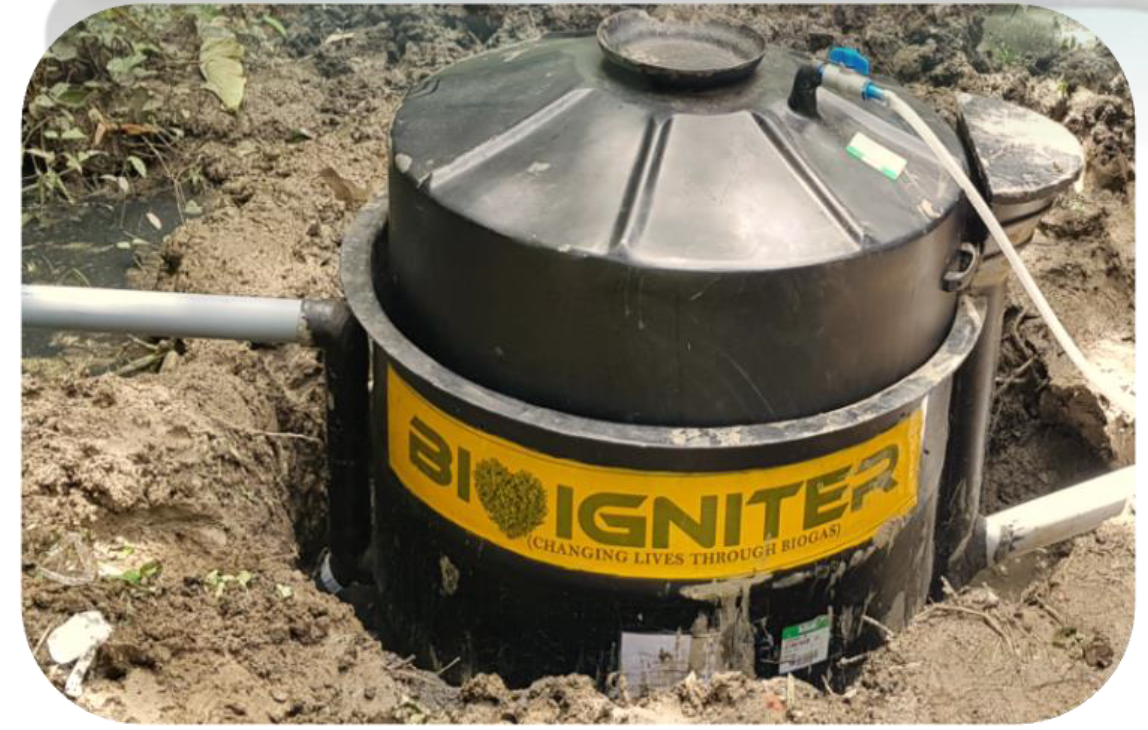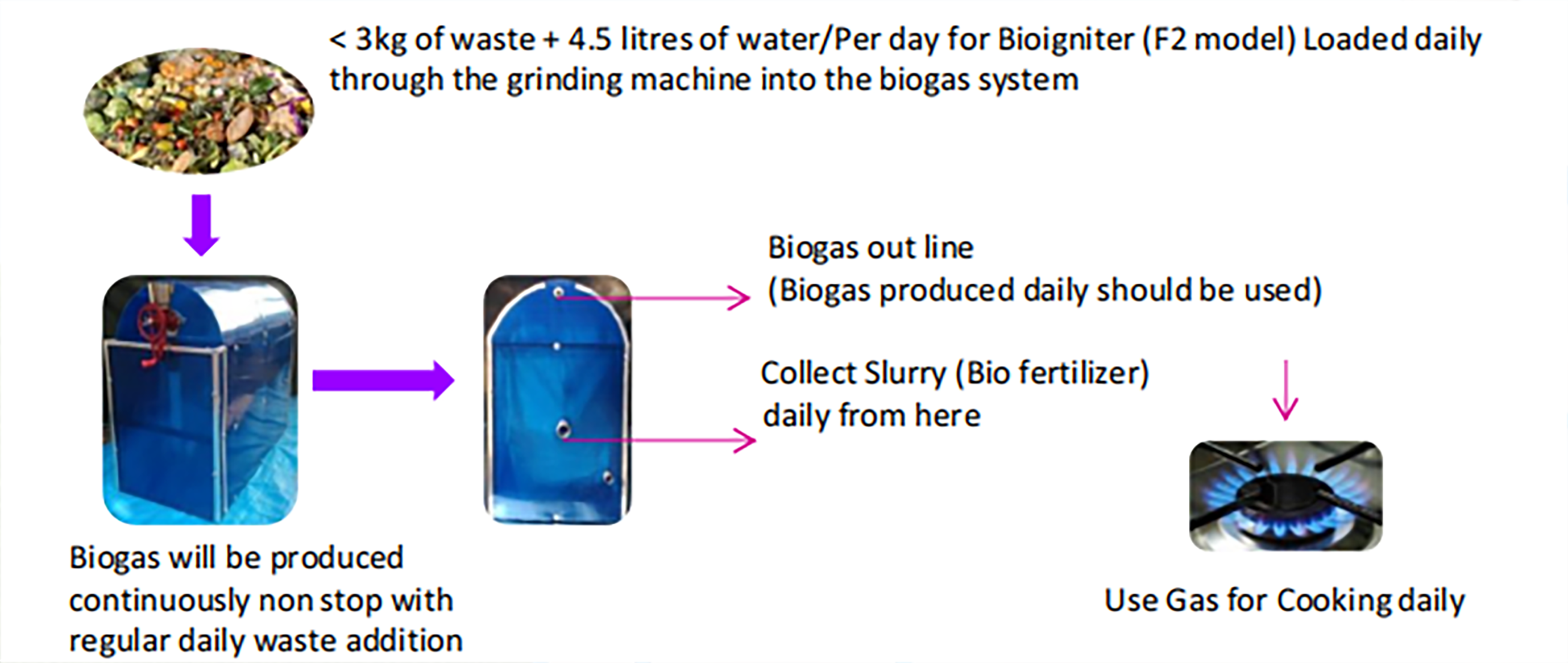
Bioigniter
SMART BIOGAS SYSTEMS FOR DOMESTIC USE
WHAT IS BIOGAS?
The Process of anaerobic Digestion converts organic waste into cooking gas and clean liquid fertilizer for the garden. anaerobic digestion is a series of biological processes in which microorganisms break down biodegradable material in the absence of oxygen. One of the end products is biogas, which is combusted to generate electricity and heat, or can be processed into renewable natural gas and transportation fuels. A range of anaerobic digestion technologies are converting livestock manure, municipal waste water solids, food waste, municipal organic solid waste, high strength industrial waste water and residuals, fats, oils and grease (FOG), and various other organic waste streams like spent grains from distilleries or breweries into biogas.

FACTORS RESPONSIBLE FOR BIOGAS PRODUCTION
CARBON : NITROGEN RATIO Raw materials blended to provide a C:N ratio of 25:1 to 30:1 are ideal for active biogas production, although initial ratios of 20:1 up to 40:1 consistently give good results.
ANAEROBIC CONDITIONAbsence of Oxygen is very important in Biogas Production. because it enhances the growth of ananaerobic methanogen bacteria producing biogas.
TEMPERATURE: The optimum temperature for better gas production is 35 – 40⁰C
DILUTION: The recommended dilution for food waste is 2.5 times and cow dung is 1:1. this produces a solid concentration of 10%, yielding better biogas quantity

ADVANTAGES OF BIOGAS
SAVE MONEY
With biogas, you can reduce your cooking fuel expenses
IMPROVE YOUR HOME
Biogas is a modern source of energy for cooking and lighting. It is quick, easy and clean.
REDUCE YOUR HOUSEHOLD WASTE
Biogas systems convert organic household waste or manure into gas for cooking and lighting. This waste can be leftovers, vegetables, peels of potatoes and fruit, etc. Instead of throwing this away or leaving them (which will attract insects and pests), you can use it to produce energy! Biogas helps you to manage your waste and contributes to improved hygiene.
PRODUCE YOU OWN ORGANIC FERTILIZER
The biogas-slurry that comes out of biogas systems is rich in nutrients and can be applied directly to plants and vegetables to help them grow.
HELP THE ENVIRONMENT
On average, each family that uses biogas reduces their use of firewood and charcoal by more than 60%. The use of biogas slows down deforestation and reduces greenhouse gas emissions. Biogas has a positive influence on both climate change and the environment.
WAY TO BIOGAS USING BIOIGNITER?

